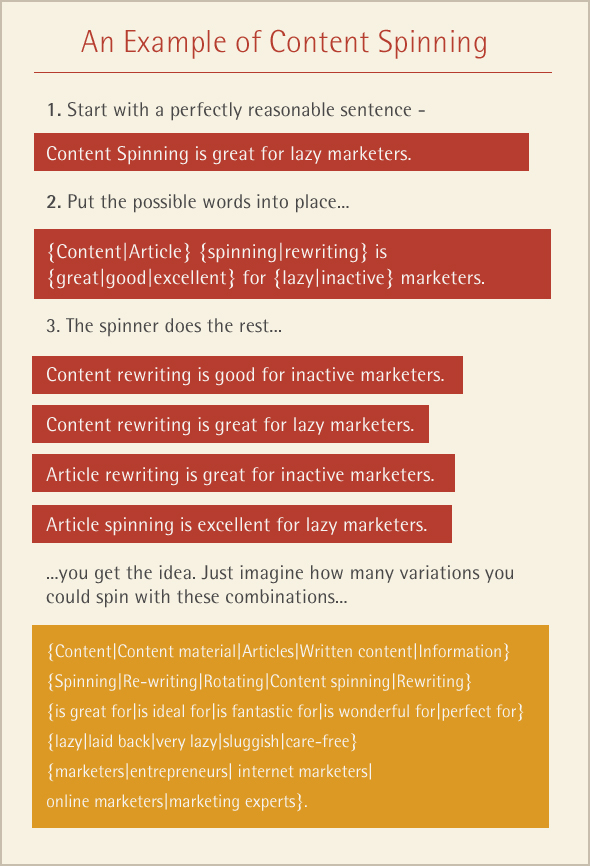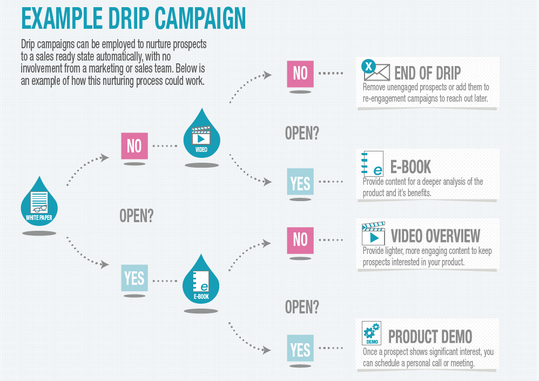How To Repurpose Content Without Looking Like A Total Jerk
When content first hit the search scene, search marketers wanted to produce as much content as humanly possible. That’s a lot of work — so much so, in fact, that it’s ushered in wave after wave of crappy content. The great news is that you don’t have to create a lot of content to rank […]
When content first hit the search scene, search marketers wanted to produce as much content as humanly possible. That’s a lot of work — so much so, in fact, that it’s ushered in wave after wave of crappy content.
 The great news is that you don’t have to create a lot of content to rank well and reach your users. You just have to better use the content you already have by repurposing it.
The great news is that you don’t have to create a lot of content to rank well and reach your users. You just have to better use the content you already have by repurposing it.
First, let’s make a key distinction:
Spinning content is rewriting your content just enough (usually with the help of some automation) so that search engines think it’s a new article. This includes things like just changing the city or keyword but leaving everything else the same.

Great example of spinning content from Orbit Media Solutions
Repurposing content, on the other hand, is repacking one piece of content across many different media. Each time, you’re adding to it (or taking away from it), and making it unique for the source, the medium and the user who’ll be reading it. The best part is that most of us are sitting on a treasure trove of great content, but don’t know how to repurpose it in a new way. So, how do we do it?
Making Extras From What You Already Have
Most companies have a blog, so let’s start with a blog post. It’s one of the first things people think about when they hear “content.” What else can you do with that blog post?
- Break out the key stats, headlines or thoughts and use it for your social content (Tweets, Facebook updates, etc.)
- Dive deeper into the topic to create a buying guide, ebook or whitepaper
- Use it for an email marketing campaign
- Host a webinar or Google Hangout
- Take the questions from the webinar or Hangout and create an FAQ section
- If questions are in-depth, create new blog posts from each of those questions
- Use SpeechPad to transcribe the webinar
- Post the recording in your video library or on YouTube
- Host an in-person Lunch and Learn in your community for some networking
That’s nine different touch points that you can create off of just one idea, and that’s nine different pieces of content that search engines (and users) can grab hold of.
For the biggest benefit, make sure that your idea is something that people are actively searching for. Use tools like UberSuggest to see the top questions that people are asking about a particular topic, and use Google Trends to see if that search word is trending up or down.
Additionally, talk to your customers to get an idea of their pain points when it comes to shopping for or buying your product or service. That’s where the best ideas will come from because you know that’s what your users need.
Recycling For Social Media Posts
Social posts should be unique, yes — but they don’t have to link to unique content. By only promoting your content once, you’re cutting its life short.
Create a handful of different social posts with different messaging that all link to the same piece of content. For example, if I were to create tweets for this post, my options could be:
- How to Repurpose Content Without Looking Like A Total Jerk
- 5 Ways to Repurpose Your Content Effectively
- How To Make Content You Already Have Work For You
- The Secret’s Out: You Don’t Have To Create A Lot of Content for SEO
- You’re Sitting On A Treasure Trove of Great Content. How Do You Find It?
Schedule them for multiple times and see which one gets the most engagement. Depending on how much you typically post, this can be multiple times a day or multiple times a week.
A month later, go back through old posts that are still relevant and sprinkle them back into your social messages. People aren’t going to get mad that it wasn’t written that day if they enjoy the content.
Drip Campaigns For Lead Nurturing
Marketing automation is easily one of the biggest buzz words of 2014, but media attention aside, it provides some incredible benefits to your digital marketing, content strategy and analytics.
Drip campaigns are an automated process that send pieces of content to your prospects in order to move them through your marketing funnel. Depending on how they interact with that email, they’ll get different pieces of content that interest them.

Example drip email campaign from Pardot
First though, you need the content to populate your drip campaign — and that’s where your existing content comes into play. Take a look at some of your best-performing blog posts, and use one of those as a first-touch. Short, digestible pieces of content for a first-touch are good because they don’t require a lot of commitment from the user. From there, you can provide different pieces that you probably already have in your arsenal:
- Whitepapers or ebooks
- Case studies
- Buying guides
- Product demos
- Archived webinars
The biggest thing to remember when you’re repurposing content is not to regurgitate the same information over and over again. With each new way you’re using the content piece, you need to add something different to it to make it unique for that particular medium.
What are some other ways you can repurposing your old content to get the most mileage?
Contributing authors are invited to create content for Search Engine Land and are chosen for their expertise and contribution to the search community. Our contributors work under the oversight of the editorial staff and contributions are checked for quality and relevance to our readers. The opinions they express are their own.
Related stories
New on Search Engine Land
